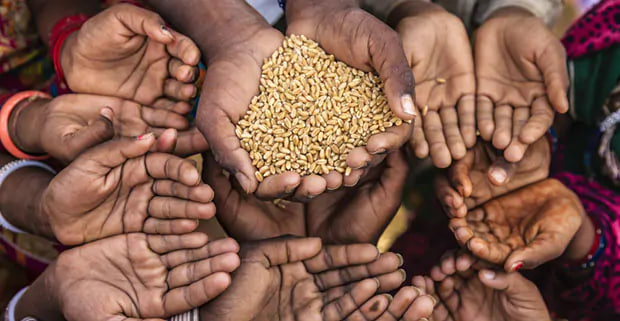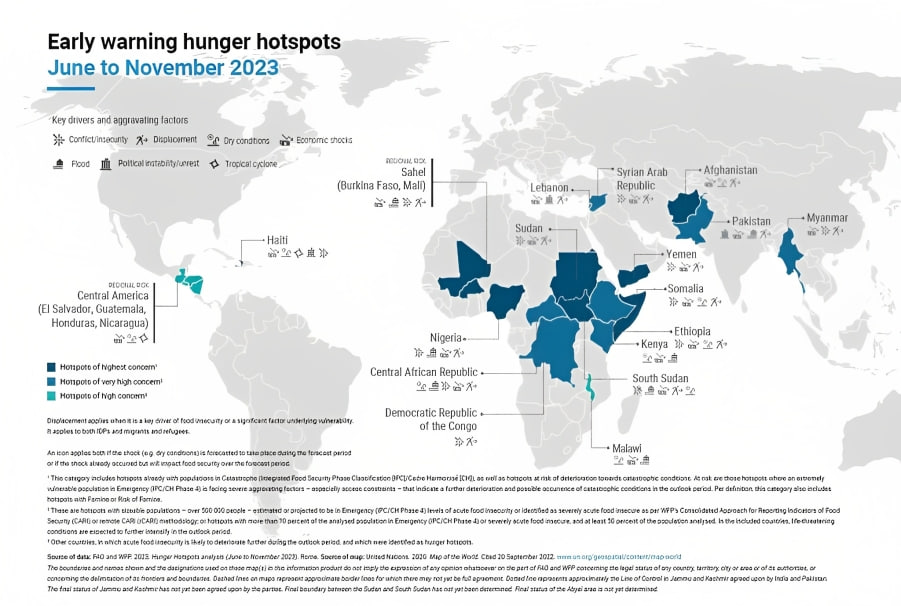Description

Copyright infringement not intended
Context: The world is facing a hunger crisis that threatens the lives and livelihoods of millions of people. According to a new report by the United Nations, there are 18 hunger hotspots where acute food insecurity is likely to deteriorate further in the next six months.
Details
- The report, jointly issued by the Food and Agriculture Organization (FAO) and the World Food Programme (WFP), warns that 18 hunger hotspots in 22 countries are facing worsening drivers of food insecurity, such as conflict, climate shocks, economic shocks and the COVID-19 pandemic.
Highlights of the Report
- Some of these hotspots, such as Sudan, Haiti, Burkina Faso and Mali, have been elevated to the highest level of concern, meaning that they are at risk of starvation or death.
- Other hotspots, such as Afghanistan, Nigeria, Somalia, South Sudan and Yemen, remain at the highest level of concern, as they have been experiencing protracted crises that have eroded their resilience and coping capacity.
- These hotspots also include India’s neighbours, Pakistan, Afghanistan and Myanmar, which are among the countries with the highest number of people facing critical levels of hunger.

Concern Raised
- The hunger crisis is not only a humanitarian tragedy but also a threat to global peace and stability.
- Hunger fuels violence and instability, as people resort to desperate measures to survive.
- Hunger also undermines human dignity and rights, as people are deprived of their basic needs and opportunities.
- Hunger also hampers development and progress, as people are unable to reach their full potential and contribute to their societies.
- The report also highlighted the potential impact of an El Nino climatic phenomenon on vulnerable countries around the globe.
- El Nino is associated with droughts, floods and storms that can disrupt agricultural production and food security.
- The report urged for increased preparedness and early action to mitigate the risks of El Nino.
Suggestions included in the Report
- The report calls for urgent humanitarian action to save lives and livelihoods in these hotspots, as well as long-term solutions to address the root causes of food insecurity.
- The report also urges for increased funding and access to deliver life-saving assistance to those in need. The FAO and the WFP estimate that they will require $5.5 billion to avert famine and hunger in these hotspots until November 2023.
Conclusion
- The world cannot afford to ignore this hunger crisis. The world has the resources and the knowledge to end hunger for good. The world has the moral obligation and the collective responsibility to act now and save lives. The world has the opportunity and the vision to achieve zero hunger by 2030, as part of the Sustainable Development Goals. The world needs to act together and act fast to prevent a catastrophe in these hunger hotspots.

Must Read Articles:
Global Hunger Index: https://www.iasgyan.in/daily-current-affairs/global-hunger-index-2022
|
PRACTICE QUESTION
Q. India is home to more than 1.4 billion people, but also to one of the highest rates of hunger in the world. According to the Global Hunger Index 2022, India ranks 107th out of 121 countries, indicating a serious level of hunger. What are the factors that contribute to this situation? How does hunger affect the health, education and livelihoods of millions of Indians? And what can be done to address this challenge and ensure food security for all?
|
https://www.downtoearth.org.in/news/food/pakistan-afghanistan-among-global-hunger-hotspots-un-report-89641















